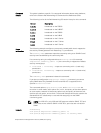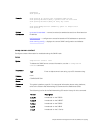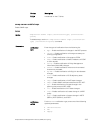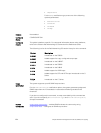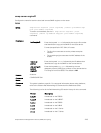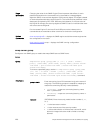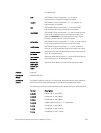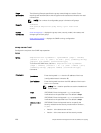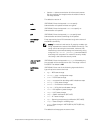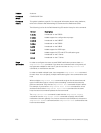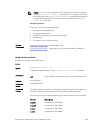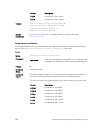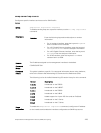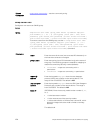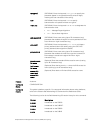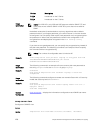
• Version 2c allows transmission of informs and counter
64, which allows for integers twice the width of what is
normally allowed.
The default is version 1.
auth (OPTIONAL) Enter the keyword auth to specify
authentication of a packet without encryption.
noauth (OPTIONAL) Enter the keyword noauth to specify no
authentication of a packet.
priv (OPTIONAL) Enter the keyword priv to specify both
authentication and then scrambling of the packet.
community-
string
Enter a text string (up to 20 characters long) as the name of
the SNMP community.
NOTE: For version 1 and version 2c security models, this
string represents the name of the SNMP community. The
string can be set using this command; however, Dell
Networking recommends setting the community string
using the snmp-server community command before
executing this command. For version 3 security model,
this string is the USM user security name.
udp-port port-
number
(OPTIONAL) Enter the keywords udp-port followed by the
port number of the remote host to use. The range is from 0
to 65535. The default is 162.
notification-
type
(OPTIONAL) Enter one of the following keywords for the
type of trap to be sent to the host:
• bgp — BGP state change.
• config — copy—configuration traps.
• ecfm — ECFM state change.
• ecmp — ecmp and link bundling traffic imbalance traps.
• entity — Entity state change.
• envmon — Environment monitor trap.
• hg-lbm — HiGig link bundle state change.
• isis — ISIS adjacency state change.
• lacp — LACP state change.
• snmp — SNMP notification (RFC 1157).
• vlt — VLT state change.
• stp — Spanning tree protocol notification (RFC 1493).
• vrrp — State change in a VRRP group.
• xstp — State change in MSTP (802.1s), RSTP (802.1w),
and PVST+.
The default is all trap types are sent to host.
Simple Network Management Protocol (SNMP) and Syslog
1719



